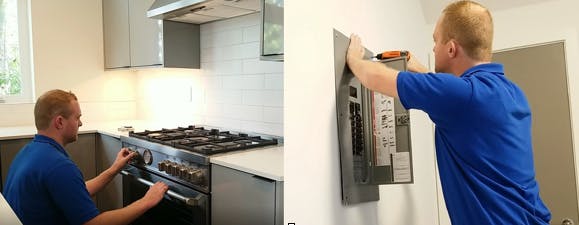Insurance and warranties on a new home provide you with peace of mind. The policies offer protection in the future should something happen to the property and the home’s inner workings. But what type of protection do buyers have before closing the purchase?
The answer: A home inspection – and its value is immeasurable.
As a buyer who now has mutual acceptance, you have a right to examine the potential new home by quickly hiring a state-licensed home inspector. The inspector will evaluate the physical condition of the home – including the foundation, construction and mechanical systems – and identify items that need repair as well as estimate the lifespan of existing systems and equipment.
Remember we discussed contingencies in a previous blog post? Well, your real estate broker should have consulted with you before submitting the offer to discuss whether to include an inspection contingency. Buyers waiving this contingency, releasing the right to inspect the home before purchase, can skip this blog post and hope insurance and home warranty policies provide enough protection.
This step in the buying process is not to be confused with the pre-inspection – although the role of the inspector and the inspection process is the same. As the name suggests, a pre-inspection takes place before a buyer considers an offer on the home and the seller agrees to open his place to the professional inspection. While pre-inspections usually cover the entire property, a common reason to conduct one is to examine the ground for serious issues, such as sewer lines, fuel tanks and fresh water sources.
The inspection also helps buyers get a better understanding of the property – water heater, furnace, plumbing, roof – before purchase and provides for greater insight into the overall condition of the property. It typically takes about two hours to inspect a condo and about three hours for a single-family home, and many inspectors only work weekdays – not evenings, weekends or holidays.
While typically not invasive, inspections include checks for termites, water leaks or compliance with housing codes. The review could also cover tests for Radon and energy efficiency. (More invasive inspections are sometimes required but they should come after written consent from the seller/homeowner.) You might also need to consider surveys to determine property boundaries, title reviews and structural inspections.
Again, inspections must be ordered by the buyer and take place within a few days of mutual acceptance. Your broker can help you find a reputable inspector or ask your friends and neighbors for recommendations. Inspectors should be bonded with at least a million dollar liability insurance policy. Anyone can consult the American Society of Home Inspectors for more information.
It’s also important to schedule the inspection at a time that’s convenient for you, your broker and inspector to all attend (and when the seller can be away from the home). It’s essential to drop everything to complete this important step. And it’s possible inspectors may be booked out up to a week or more in busier times of the year (April-July).
During the inspection, watch what he/she is doing and ask questions when unsure. Understand what the inspector is jotting down and taking note of since it’s probably going to be contained in the report. This is likely going to be your new home, so learn as much about it as possible.
Important: Bring your check book; payment via check or (sometimes) credit card is due at the conclusion of the inspection – not through an invoice. If purchasing a house (rather than a condo), we suggest wearing comfortable clothes in case the inspector wants to show you something in the basement or on the roof.
Is it worth the price? The answer is an unequivocal “yes!” The average home inspection costs around $350, with homes under 1,000 square feet being as little as $250. Larger homes could run $500 or more, and tests for Radon and mold will cost extra, even as much as the regular inspection fee. Secondary inspections – either to reinspect an identified issue or to hire a specialist to examine one area, such as asbestos – will also add to the total.
Pest and other types of inspections may be required to get a mortgage, especially when applying for a VA loan. A majority of inspectors can conduct a pest inspection while on-site completing the rest of the home assessment.
At the end of the initial inspection, you’ll receive a report within two days on any significant defects and issues. Your broker will share a copy of the report once it is filed by the inspector. Do not wait until the last minute to review the report. Buyers have a short window of opportunity to respond to the seller about the report’s findings and to discuss next steps – including, possibly, additional inspections.
More on that topic in my next blog post in this buyer series.




